Maersk Sees No Let Up In Surging Cost of Shipping Goods
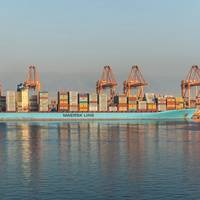
The cost of shipping goods has surged 25-30% since the start of the pandemic due to array of inflationary pressures that are "unlikely to abate in the short term," world No.
Op/Ed: All Hands On Deck to Tackle Decarbonization Today
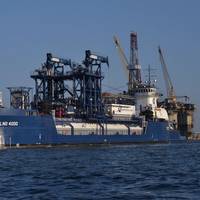
Without action from the shipping sector to decarbonize, the sector will be responsible for approximately 17% of global CO2 emissions by 2050. And given the scale of the change required, we must address this now. Across the industry, many are wrestling with what steps to take to drive their decarbonization journeys.Last year, Shell and Deloitte published a joint report, Decarbonizing Shipping: All Hands on Deck, assessing the key factors affecting decarbonization of the shipping sector.
Interview: Tracy Zea, President & CEO, Waterways Council Inc.
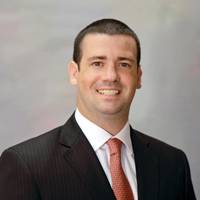
We recently checked in with Tracy Zea, Waterways Council Inc.’s new President & CEO, on what’s in store for the U.S. inland waterways for the remainder of 2020.To start, give us some insight on your background and how you came to lead WCI.I was born and raised in Chandler, Ariz., and attended South Dakota State University, receiving a degree in Political Science. After college, I found my way to Washington, D.C. via an internship with Senator Thune (R-S.D.). After the internship, I was hired by the House of Representatives, Transportation and Infrastructure Committee.
US Shipyards Forge Ahead Through COVID-19
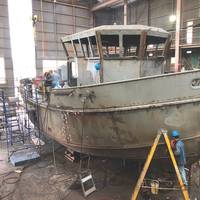
As the novel coronavirus and its impacts continue to spread across America, U.S. shipbuilders, by and large, continue to build. While most yards have been deemed essential to marine transportation and/or national security and have been able to maintain operations, the situation at and around every shipyard is different, and there are several builders across the country that have had to temporarily suspend activity. In either scenario, it’s far from business as usual for America’s…
Interview: Mark Knoy, President and CEO, ACBL
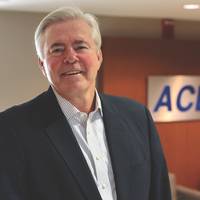
American Commercial Barge Line (ACBL) named Mark K. Knoy as its president and chief executive officer in August 2011. Prior to joining ACBL, he was vice president of American Electric Power’s (AEP) Fuel, Emissions and Logistics Group and president of AEP River Operations, having joined AEP with its 2001 purchase of MEMCO Barge Line. From 1984 to 1994, he was owner/operator of The Mark Twain Towing Company and Delmar Marine, Inc., Pekin, Illinois. He began his career in 1973 working aboard towboats on the inland waterways as a deck hand and then as a captain.
Interview: William P. Doyle - CEO, Dredging Contractors of America
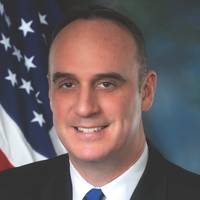
William P. Doyle is the new CEO & Executive Director of the Dredging Contractors of America (DCA). Twice a U.S. Senate confirmed Presidential appointee to the U.S. Federal Maritime Commission (FMC), Doyle has, over the course of a long and celebrated career, worn many prestigious hats. Prior to his FMC appointment, Mr. Doyle served on cabinet and executive level boards and committees under both the Obama and George W. Bush Administrations. Before that, he served as an officer in the U.S. Merchant Marine as a U.S. Coast Guard licensed marine engineer aboard numerous classes of vessels.
Marine News' Top 10 Stories of 2017
Plucked from the headlines, the top stories of 2017 were compelling, and each provided impact to the domestic waterfront and in particular – the workboat sector. Follow along as Marine News recaps the highlights, drama and significant events that shaped the past 12 months. When Elaine Chao was sworn in to be the U.S. Secretary of Transportation, the Washington veteran brought a welcome burst of competence to the position. Her wide-ranging experience across the maritime sector and prior service at the U.S. Department of Transportation, Maritime Administration, and the Federal Maritime Commission uniquely positions her to understand the critical role that the waterfront plays in the intermodal equation. Soon after taking her chair, she was joined by another familiar face at Marad. Rear Adm.
Campbell CEO Stephaich Weighs in on All Things Inland
Peter H. Stephaich is Chairman and CEO of Blue Danube Incorporated and Campbell Transportation Company. Peter is also on the Board of Directors of Blue Danube, a position that he has held since 1982. If today he isn’t the most familiar name on the domestic waterfront, then perhaps, he should be. Serving the barge industry for over 30 years in a number of key roles, he also counts among his many qualifications his tenure(s) as Past Chairman and Past Treasurer of the American Waterways Operators (AWO), Past Chairman and Trustee of the National Waterways Foundation, Vice Chairman and Executive Committee of Waterways Council (WCI) and as Commissioner and Vice Chairman of the Port of Pittsburgh Commission.
New Approaches to Inland Infrastructure Renewal
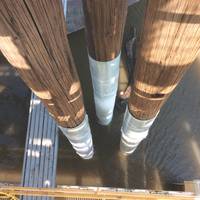
Economical repairs are being applied to rapidly corroding steel and concrete structures in U.S. ports and inland waterways. The new repair systems – PileMedic & SPiRe – might just be what the doctor ordered. Recent advancements in using Fiber Reinforced Polymer (FRP) for major structural repair and strengthening of submerged marine piles made of concrete or even timber has led to an economical, less invasive infrastructure repair solution for inland port development compared to current systems.
Rethinking Inland Infrastructure Finance

P3: An alternative to tolls or lockage fees in public-private partnerships for inland waterways. Within the generally sorry state of the U.S. inland waterways infrastructure, there are some locations where conditions are particularly dire. Among those in this latter situation are several locks and dams on the Illinois River, including the La Grange Lock and Dam and the Peoria Lock and Dam, both of which were completed in 1939. Both of them are on the U.S. National Register of Historic Places, which is a dubious distinction for a major transportation facility of the twenty-first century.
New Inland Port Planned in South Carolina
Plans to develop South Carolina’s second inland port in Dillon were announced by the South Carolina Ports Authority (SCPA) in a move that aims to support growth of intermodal container volumes and expand access to markets in neighboring states and throughout the Northeast and Midwest, according to the SCPA. A resolution authorizing the port to move forward with construction of the terminal in the Carolinas I-95 Mega Site was unanimously approved by the SCPA Board of Directors. SCPA will break ground on the new terminal in the first quarter of 2017, and plans to open the facility by the end of the year. “Inland Port Dillon will be a great diversification of our state's logistics footprint,” said Jim Newsome, SCPA president and CEO.
US Workboat Market: Domestic Drivers
Sectors of the U.S. market are hot, but for how long? Five key variables drive the domestic brown water market. The challenging operating climate currently facing blue water, international trades can and sometimes does overshadow what happens on the American side of the big pond. But, as they often say in London, “When America sneezes; the rest of the world catches a cold.” Hence, what happens in the U.S. brown water, workboat markets – encompassing more than 39,500 hulls and 98 percent of our collective domestic merchant fleet – is especially important. Looking ahead, at least five variables will drive those markets in the months to come. Regulatory changes are already having a marked impact on the industry, but much of that is still yet to come.
NAMJet Seals Unique Military Contract
NAMJet’s tractor jets seal the deal on a significant military boat building contract. The Army’s one-of-a-kind bridge erection boats fill an obscure, shallow draft workboat niche, while showcasing capabilities that someday could be commercially viable. When the U.S. Army turned to industry in its quest to design the next generation, prototype bridge erection boat, the ensuing competition attracted no less than three industry competition teams, all of whom eventually submitted prototypes in 2010. Birdon America, Inc., teaming with a (now) wholly owned NAMJet propulsion group, was one of the players. These models were then handed over to the U.S. Army for extensive testing. Eventually, in March of this year, Birdon won the US Army Bridge Erection Boat (BEB) platform contract.
ACL Selected to Serve on the IWUB
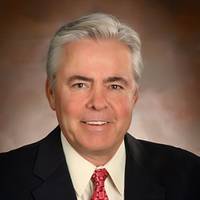
American Commercial Lines (ACL) has been selected to serve as a representative on the Inland Waterways Users Board (IWUB), an advisory board established to monitor the Inland Waterways Trust Fund (Fund) and make recommendations to the Army Corps of Engineers and to Congress on investment priorities using resources from the Fund. Comprised of representatives of the barge transportation industry and the customers it serves, the IWUB provides input to help identify and prioritize investment in inland navigation infrastructure.





